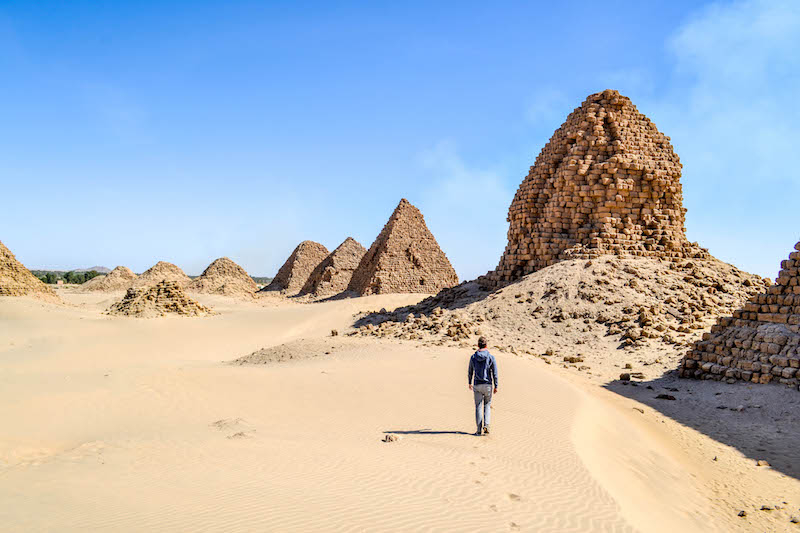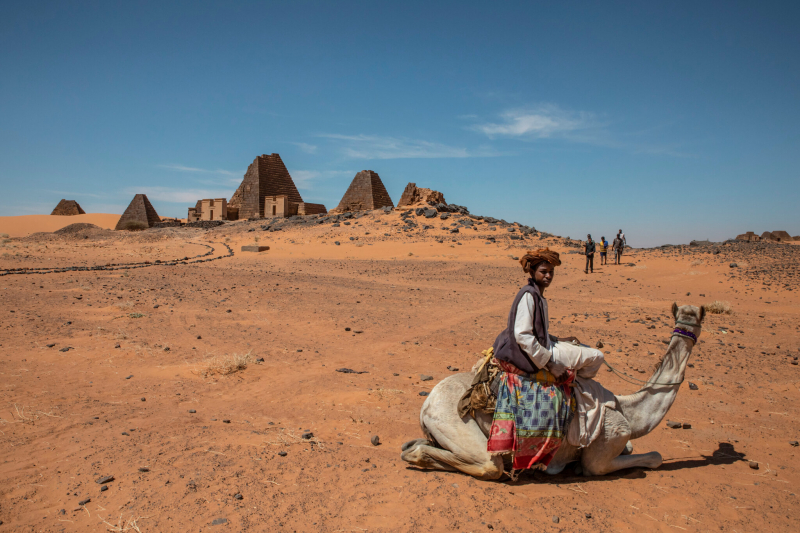Nuri
Nuri is a town in contemporary Sudan on the Nile's west bank, near the Fourth Cataract. Nuri lies around 15 kilometers north of Sanam and 10 kilometers from Jebel Barkal.
At Nuri, which functioned as a royal necropolis for the ancient city of Napata, the first capital of the Nubian Kingdom of Kush, more than 20 ancient pyramids belonging to Nubian kings and queens are still standing. It is likely that at its peak, Nuri had 80 or more pyramids commemorating royal burials. The Nuri pyramids were constructed during a three-century period, beginning around 670 BCE with the oldest (the Taharqa pyramid) and ending around 310 BCE (the pyramid of king Nastasen).
King Taharqa built the first known pyramid at Nuri, which is 51.75 meters square by 40 or 50 meters high. The Taharqa pyramid was built so that when viewed from Gebel Barkal at daybreak on Egyptian New Year's Day, the start of the yearly flooding of the Nile, the sun would rise directly over its tip.
Tantamani, Taharqa's successor, was buried at el-Kurru, but all Napatan kings and many of their queens and children until Nastasen were buried here, along with around 80 royals. The Nuri pyramids are generally smaller than the Egyptian pyramids and are typically badly damaged (due to both human and natural causes), yet they frequently still preserved considerable elements of the burial equipment of the Kushite rulers who were buried here. A church was built here during the Christian era. The church was built in part from recycled pyramid stones, including many stelae from the pyramid chapels.
George Reisner explored the pyramids in the early twentieth century. In 2018, a fresh archaeological expedition led by Pearce Paul Creasman began excavating at the site.
Since 2003, the Nuri pyramids and other constructions in the Gebel Barkal region have been listed on the UNESCO list of global cultural heritage sites.
Location: Northern State, Sudan








